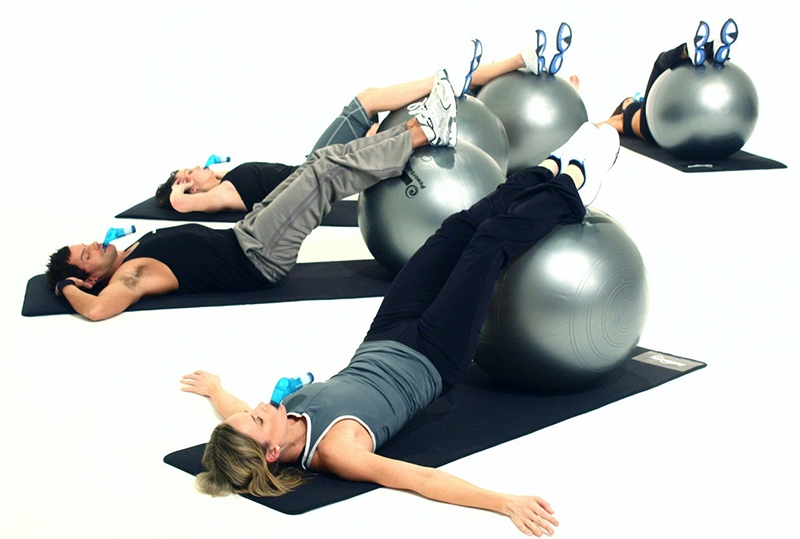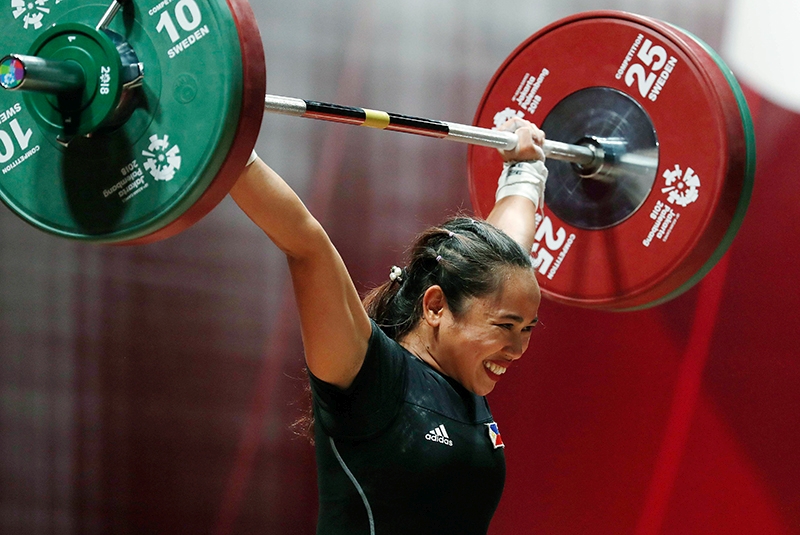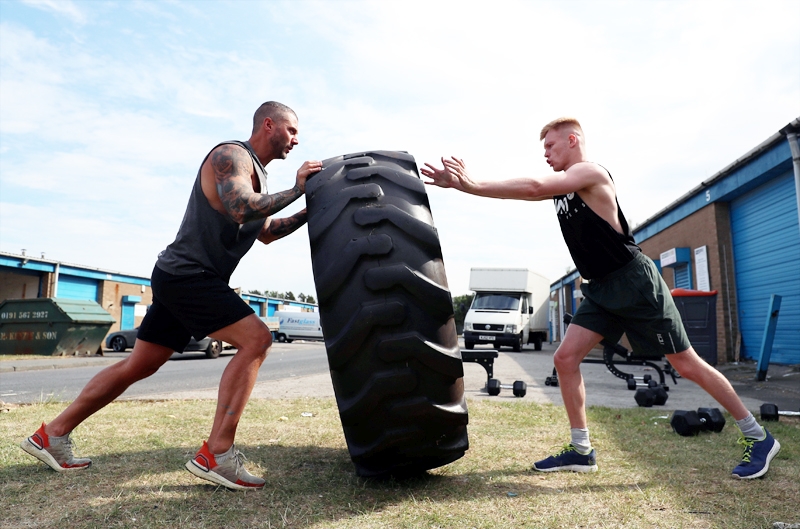You are viewing 1 of your 1 free articles. For unlimited access take a risk-free trial
BFR training: resistance is NOT futile!

Andrew Sheaff explains why and how blood flow restriction training can provide the benefits of high-intensity training with low-intensity loading
Injury can stop any stop training cycle in its tracks, a fact that most athletes know all too well. While the best course of action is obvious with some injuries, for others, it can be less so. For instance, if you have a broken bone in your leg, weight-bearing activity is off the table. But what about very minor knee pain, or perhaps a slight hamstring strain? While high intensity training might not be possible, recent evidence shows that there are strategies you can employ to mimic the benefits of high intensity training while working at lower intensities, thus limiting the risk of aggravating your injury. This provides a real advantage as you can get the benefits of high intensity training without the risks. You can let your injury heal without losing the adaptations you’ve accrued due to your previous high intensity training efforts.High or low?
Over the past decade, research findings have been accumulating about the positive benefits of an alternative approach to training known as ‘blood-flow restriction training’. Blood-flow restriction training is a form of training where restrictive wraps are placed on the upper portion of the limbs to occlude venous (lower pressure, flowing towards the heart), but not arterial (high pressure flowing away from the heart) blood flow. Lower intensity training is then performed while these wraps remain in place. Two recent meta-analyses (statistical analyses) that combine the results of multiple scientific studies, sought to determine the impact of lower-loading, blood-flow restriction strength training on muscle strength and growth as compared to traditional high intensity training(1,2). When combining all of the studies, the researchers concluded that low-loading blood-flow restriction training was equivalent to high intensity resistance training for the development of muscle mass. In terms of muscle strength one of the meta-analyses found that strength gains were equivalent(1), while the other found that strength improvements were slightly higher following high intensity resistance training(2). While not as conclusive as the findings in muscle mass, blood-flow restriction training can clearly improve muscle strength, although perhaps not quite to the same degree as more traditional methods.What does this mean for athletes?
While high intensity resistance training is still the gold standard when it comes to building and maintaining muscle mass and strength, blood-flow restriction training can be just as effective at maintaining muscle mass, and nearly as effective at maintaining muscle strength. The key difference is that the loads used during blood-flow restriction training are significantly less, yet the benefits are similar. If you can’t perform high intensity resistance training due to injury or a lack of training equipment, blood-flow restriction training is an excellent option for retaining your muscle and strength until you can return to more traditional training. While this approach may not be completely ideal, training rarely is, and any activity you can perform to reduce injury-related losses in fitness will allow for much a speedier return to full training.Creating pressure
While many of the studies investigating blood-flow restriction training use fairly sophisticated equipment, it’s not necessary to do so while training on your own. A major benefit of using high-tech equipment is that it allows for standardization, and in the research setting, this is critical to ensure that each subject is getting the exact same training intervention. In the real world, this isn’t quite as important. If you have the money and the desire, more expensive equipment can be useful, but don’t let a lack of expensive equipment dissuade you from trying other approaches to blood-flow restriction training.Past research has demonstrated that ‘home-brewed’ versions of blood-flow restriction training can be just as effective as that carried out with more expensive equipment(3). Researchers found that wrapping the limbs with elastic wraps was as effective at occluding venous (but not arterial) flow as the more sophisticated devices. Inexpensive elastic wraps designed for this purpose can easily be purchased online from several different vendors. Importantly, a perceived pressure of 7 out of 10 was most effective for creating the appropriate training environment. The guidance is to simply trust what you feel. If it feels too tight, it probably is, and if it feels too loose, it probably is. Shoot for a ‘7 out of 10’ in terms of how much pressure the wrap is creating.
Applying BFR in practice
Have explored the benefits of blood-flow restriction training for the development of muscles mass and strength without high intensities, as well as how to apply blood-flow restriction training without expensive equipment, let’s put it all together with a practical solution for a specific problem. First, you’ll need to create the appropriate degree of blood-flow restriction. Taking the thighs as an example, place the bands as high up on the thigh as you can, right at the top of the groin and right along the gluteal fold (where the bottom of the butt meets the thigh – see figure 1). Once you have the bands in place, tighten them according to the appropriate pressure as indicated by your device, or to the subjective pressure of 7 out of 10.Figure 1: Band location for thigh exercises (lunges shown here)

With the device in place, it’s time to train. In the case of a minor quadriceps strain or slight pain during knee extension, you could simply perform light knee extensions, body weight squats, lunges, or step-ups depending on your load tolerance and your ability to move without pain. Alternatively, let’s say you have a minor hamstring strain, and you’ve been cleared to perform any activity that doesn’t generate pain. Given that high speed running and intense weight training will likely still cause some discomfort, you could perform light hamstring curls or light Romanian deadlifts to train the knee flexion or hip extension function of the hamstring, respectively. In both situations, you could also perform repetitions over a partial range of motion, staying within a pain free range of motion.
For either injury type, you’d want to choose a load that allows for about 30 repetitions prior to muscular failure. You should then perform 30 repetitions followed by a 15-30 second break. Following this set, perform 15 more repetitions, take a brief rest, and perform two more sets of 15 reps. In terms of repetitions, this amounts to 30-15-15-15 with a brief break between each set. While it’s important to generate a significant amount of fatigue, it’s not necessary to train to absolute failure. Very recent research has demonstrated that the effects of blood-flow restriction training taken to failure lead to similar improvements in muscles mass when compared to training not taken to failure(4). Of course, if you’d like to train to failure to ‘make sure’ you’re working hard enough, feel free to do so!
References
- Sports Med. 2018 Feb;48(2):361-378.
- Scand J Med Sci Sports. 2020 May;30(5):837-848.
- J Strength Cond Res. 2013 Nov;27(11):3068-75.
- Scand J Med Sci Sports. 2021 Mar 18. doi: 10.1111/sms.13952. Online ahead of print.
Newsletter Sign Up
Testimonials
Dr. Alexandra Fandetti-Robin, Back & Body Chiropractic
Elspeth Cowell MSCh DpodM SRCh HCPC reg
William Hunter, Nuffield Health
Newsletter Sign Up
Coaches Testimonials
Dr. Alexandra Fandetti-Robin, Back & Body Chiropractic
Elspeth Cowell MSCh DpodM SRCh HCPC reg
William Hunter, Nuffield Health
Keep up with latest sports science research and apply it to maximize performance
Today you have the chance to join a group of athletes, and sports coaches/trainers who all have something special in common...
They use the latest research to improve performance for themselves and their clients - both athletes and sports teams - with help from global specialists in the fields of sports science, sports medicine and sports psychology.
They do this by reading Sports Performance Bulletin, an easy-to-digest but serious-minded journal dedicated to high performance sports. SPB offers a wealth of information and insight into the latest research, in an easily-accessible and understood format, along with a wealth of practical recommendations.
*includes 3 coaching manuals
Get Inspired
All the latest techniques and approaches
Sports Performance Bulletin helps dedicated endurance athletes improve their performance. Sense-checking the latest sports science research, and sourcing evidence and case studies to support findings, Sports Performance Bulletin turns proven insights into easily digestible practical advice. Supporting athletes, coaches and professionals who wish to ensure their guidance and programmes are kept right up to date and based on credible science.












